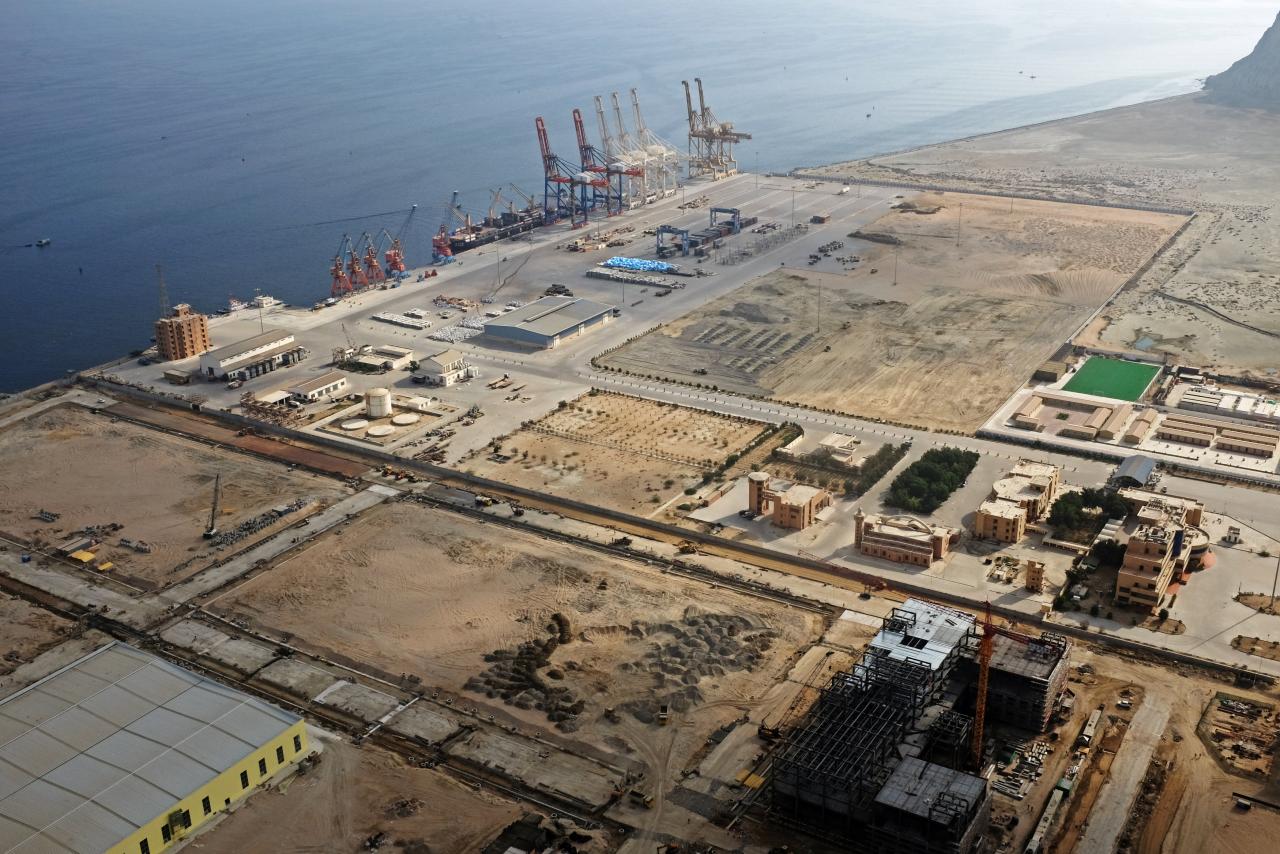
The current account deficit caused by increasing imports and stagnant and even falling exports is held largely responsible for this evidently.
Budgetary and trade deficits have been the two major weaknesses of Pakistan’s economy, making it unsustainable. Most of the times, crises have occurred and have been managed through the IMF and friendly countries’ support.
This time CPEC was invented to be a game changer and the solution of all woes. The unholy truth is that CPEC has been part of the problem due to rise in imports of machinery and equipment. Improved trade relations have also resulted in increase in imports from China to $12 billion against Pakistan’s exports to China of hardly $3 billion.
It was political sloganeering and an attempt to avoid real working and policy changes. Infrastructure like energy and roads can be helpful in lighting the industry and moving the goods. But you have to have goods and production.
The third component of CPEC, launched lately, is still in limbo and seems to be in search of strategy and a real blue print.
A lot has already been said about the high cost of energy from CPEC projects, which, however, is not the core of the subject, although it does affect long-term competitiveness of the economy and exports. Perhaps, more urgent and important is the import content of the CPEC project, both in terms of lack of utilisation of local content and also by creating dependence on fuel imports.
Pakistan’s major problem is high energy imports varying between $12 and $20 billion, which is clearly unsustainable. CPEC has added to the problem. More than $2 billion of coal would have to be imported annually for the next 30 years to fuel the imported coal-based projects under CPEC.
More would have come, but for the political change that has managed to prevent it. A better solution could have been to install a flexible fuel technology which could have enabled to switch to local coal when it would have been available. The correction to the existing equipment can be done by installing pre-drying equipment and should be considered on an economic basis.
Thar coal
In retrospect, one can argue that it was a wrong choice to defer Thar coal and not make it as a main pulling horse. There was no uncertainty in Thar coal, as on the Indian side, electricity is being produced for the last many decades on Thar coal.
To correct the situation, a major Thar coal initiative should be included in CPEC for a 5,000-megawatt power plant package along with a mine of 30 million tons per annum (as against a host of small projects presently).
A coal gasification component may also be added to provide feed gas to nearby fertiliser plants, if the production cost does not exceed the price of LNG.
In India, lignite-based iron-steel plants have been investigated which may be considered as well. However, it has to be cost-effective and not like the present situation where Thar coal and its electricity are being produced at twice the cost.
New prices based on the proposed large package should not be more than $25 per ton and 5 US cents per kilowatt-hour which are regionally and internationally competitive rates. I believe, if international competition is invited, one may be able to get comparable prices.
But no need of it, let CPEC handle it within the proposed price range. Cheaper solar and to some extent wind power need to be added to the CPEC portfolio to reduce imports and costs.
Minerals
The quickest way to increase exports is to start with minerals. Pakistan has vast mineral resources. At least, to the extent of copper, it has been deposited. China had already installed a copper mining and processing facility in Balochistan (Saindak) which seems to have finished its useful life.
China has a considerable and continued interest in copper and other mineral imports. Legal issues should be sorted out in Reko Diq and the resource be utilised either within the Reko Diq framework or CPEC be introduced into it in the area not covered by the earlier litigant company.
There are other ores like zinc, chromium, etc both in Balochistan and in northern tribal areas. Even marble and granite sector could be improved. More geological exploration should be made under CPEC and mining production should be increased to the industrial level.
It is estimated that $5 billion of mineral exports can be made in a matter of five years, half of which could come from copper alone.
Technological impetus
There are two phases in Pakistan’s economy where major technology input has been introduced – one in Ayub Khan’s period and the other in ZA Bhutto’s period which continued into the General Zia period, wherein major projects of Pakistan Steel and heavy industries in Taxila and elsewhere were established.
Except for Pakistan Steel, all others have been made by China. It has been more than 40 years now. Most of these projects have become sick and outdated after playing a major role in spreading technology in Pakistan, giving rise to local entrepreneurs in allied areas.
Later governments have not undertaken similar initiatives and have relied on short-term approaches like utilising existing capacities in the construction sector and the automotive industry. A new and major technological impetus is required. It can be launched by rebuilding the earlier industries but it should not necessarily be limited to these.
Earlier, there used to be a problem of lack of demand. Now in the form of CPEC, there is a big source of demand. It should be the objective that 50% of the power equipment required in CPEC projects is produced in Pakistan through the installation of new plants under the 3rd CPEC component.
One needs not be too strict about Special Economic Zones. Facilities should be utilised wherever nuclei are available and where work can be started without further loss of time. This proposed technology initiative will both increase export capabilities and help reduce imports. A trade impact including exports and import substitution of $5 billion in initial years needs to be targeted in this respect.
Proposals
It is, therefore, necessary to consider two proposals of Commerce Adviser Abdul Razak Dawood, who is a highly experienced and successful entrepreneur, especially in technological areas.
Of the two proposals, one is of a thinking period of one year to think through the allied problems and work out a new amended programme; and the second is to reschedule the projects with a delay of five years so as to ease the import and debt burden and also to be able to implement proposals such as those made above.
Nepra has forecast a surplus of 14,000MW of electricity if all proposed projects are implemented. Some pruning may be required to avoid payment problems. Already, there is a circular debt exceeding Rs1 trillion.
Anti-CPEC stance
The present administration suffers from its anti-CPEC stance taken before elections. Any proposal of making some adjustments and including some new initiatives and asking for some time immediately sends wrong signals to the stakeholders, especially related to the strategic issues.
There is sensitive strategic cooperation between China and Pakistan, which is feared to be affected by any tinkering with the project. However, China will understand that an economically strong and independent strategic partner would be better than the one which is always in need of urgent help. An improved CPEC design is in the interest of all. Let us redesign it.
The writer is former member energy of the Planning Commission
Published in The Express Tribune, October 15th, 2018.
Like Business on Facebook, follow @TribuneBiz on Twitter to stay informed and join in the conversation.

































1713853507-0/MalalaHilary-(2)1713853507-0-270x192.webp)







COMMENTS (4)
Comments are moderated and generally will be posted if they are on-topic and not abusive.
For more information, please see our Comments FAQ